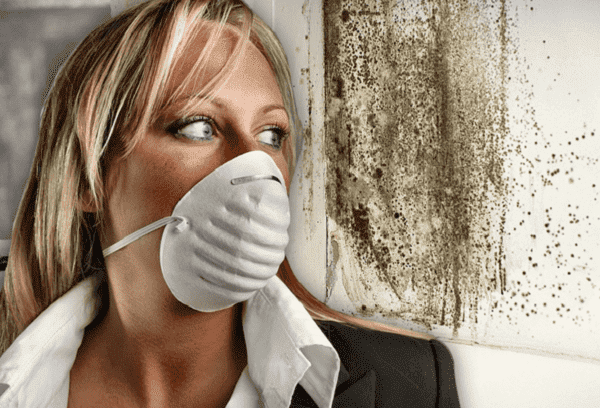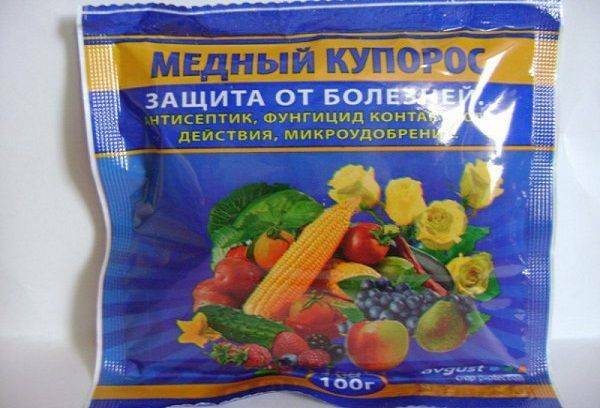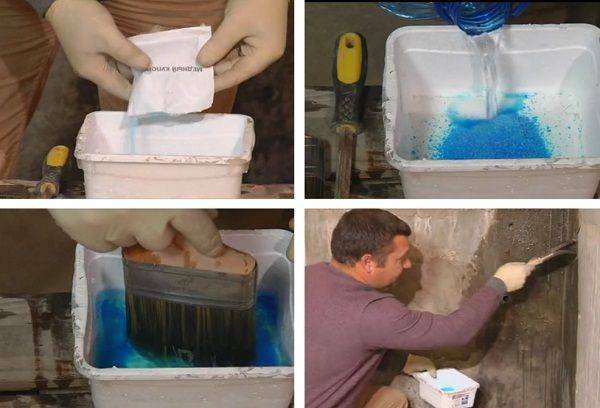Contents:
- Where does mold come from and why should it be combated
- How to get rid of mold on the walls
- We take precautionary measures
- Prevention of the appearance of mold
Copper sulphate is an effective means to combat the fungus that is planted on the walls of the premises. But to get a working solution you need to know how to dissolve copper vitriol to treat walls from mold, and also how to use it correctly. This will help get rid of the harmful fungus.

Where does mold come from and why should it be combated?
The emerging mold not only spoils the general appearance of the walls in the rooms, but also negatively affects the health of people who spend a lot of time in them. Mold can cause permanent weakness, headaches, general malaise. It can cause an allergic reaction, trigger an asthma attack. The constant exposure to fungal secretions can lead to various diseases of the upper respiratory tract.
The main cause of the appearance of this fungus is often increased humidity and inefficient ventilation. There are mold spores almost everywhere. They freely move through the air, settling on objects. If they get into a favorable environment, they germinate and, growing up, form a colony, which we observe in the form of dark spots. It is clear that getting rid of this uninvited "lodger" is desirable as soon as possible.

How to get rid of mold on the walls
One of the most effective and at the same time inexpensive means against mold on the walls is copper sulfate( copper sulfate).It can be purchased at any stores offering goods for the garden and the garden, as well as in construction and hardware stores.
This preparation is produced in the form of a powder or small granules of blue color. To treat walls from mold, you should prepare a working solution, for which the copper sulfate must be diluted in water at a rate of 20-30 grams of the drug per 1 liter. Copper sulphate dissolves better in warm water. Before use, the finished product must be mixed well. To increase the effectiveness of the solution, you can add a tablespoon of vinegar.

After the copper sulfate has been prepared, it is possible to begin treatment of the walls against the fungus.
- Places where there are traces of mold on the walls should be cleaned. This can be done with a spatula or fine sandpaper.
- Cleaned areas preferably wipe with a soap solution. The use of a soap solution increases the efficiency of further processing with copper sulfate.
- Allow the cleaned areas to dry.
- Use a sprayer or kitchen sponge to apply a solution to the affected parts of the walls.
- After a few( 3-5) hours, after drying the solution, apply copper sulfate again.
- This procedure is carried out 2 to 5 times, depending on the depth of the fungal wall.
- With a deep lesion, the application of the solution over the wall surface will not be effective enough. In this case, you must first completely remove the affected plaster and only then carry out treatment against the fungus.

We take precautionary measures
Copper sulphate is a poisonous substance. Although in order to poison them, it takes a long time, much more than the time of processing the room. Nevertheless, with inaccurate treatment, you can cause serious harm to your body. Therefore, when working with copper sulfate, you should protect yourself.
- Always wear rubber gloves during handling.
- Protect eyes from accidental splashing with glasses.
- If there is no special clothing, then you have to dress so that the entire body is closed.
- Mouth and nose covered with a respirator or gauze bandage.
- During processing open the windows, turn on the hood.
- Clothing, at the end of work, it is necessary to wash and dry in the open air.

After treatment it is necessary to limit stay in these rooms to a minimum. After 2-3 days, the solution of copper sulfate will dry completely, and will not pose any danger to human health.
Preventing the appearance of
mold To get rid of mold on the walls forever or at least for a long time, it is necessary to eliminate the conditions for its reproduction and development simultaneously with the treatment.
- It is very important to regularly ventilate the room. Good ventilation is the best protection against fungus.
- Do not supercool the walls in the room.
- Try not to allow a prolonged increase in humidity( constantly hung clothes, boiling pots for a long time, etc.).
- Keep in order the plumbing and plumbing.
- For repair use moisture-resistant materials and antiseptic substances.
- When installing furniture to external( "street") walls, it is necessary to leave a gap allowing free circulation of air.
- In rooms with high humidity it is desirable to limit the number of indoor plants.
- When replacing wooden windows with plastic ones, it is advisable to take care of the ventilation system. This is especially important if the walls and ceiling are not covered with "breathable" materials: ceramic tiles, plastic or MDF panels or non-woven wallpaper.
If you follow these simple rules, you can permanently get rid of mold.
The appearance of dark spots from the fungus on the walls is very unpleasant, but if processing with copper sulfate against it is carried out qualitatively, the mold will not appear in this room for several years, even under conditions favorable for its development.
